Understanding the Spectrum of Facial Rejuvenation
Facial aging manifests in various ways, from sagging skin and wrinkles to drooping brows and eyelids. To combat these signs, plastic surgery offers several targeted techniques including facelifts, brow lifts, and eyelid surgery, each designed to address specific concerns for a refreshed, youthful appearance. This article delves into these procedures, comparing their methods, results, recovery, and suitability to help readers make informed decisions about facial rejuvenation.
Facelifts: Comprehensive Renewal of the Lower and Mid-Face
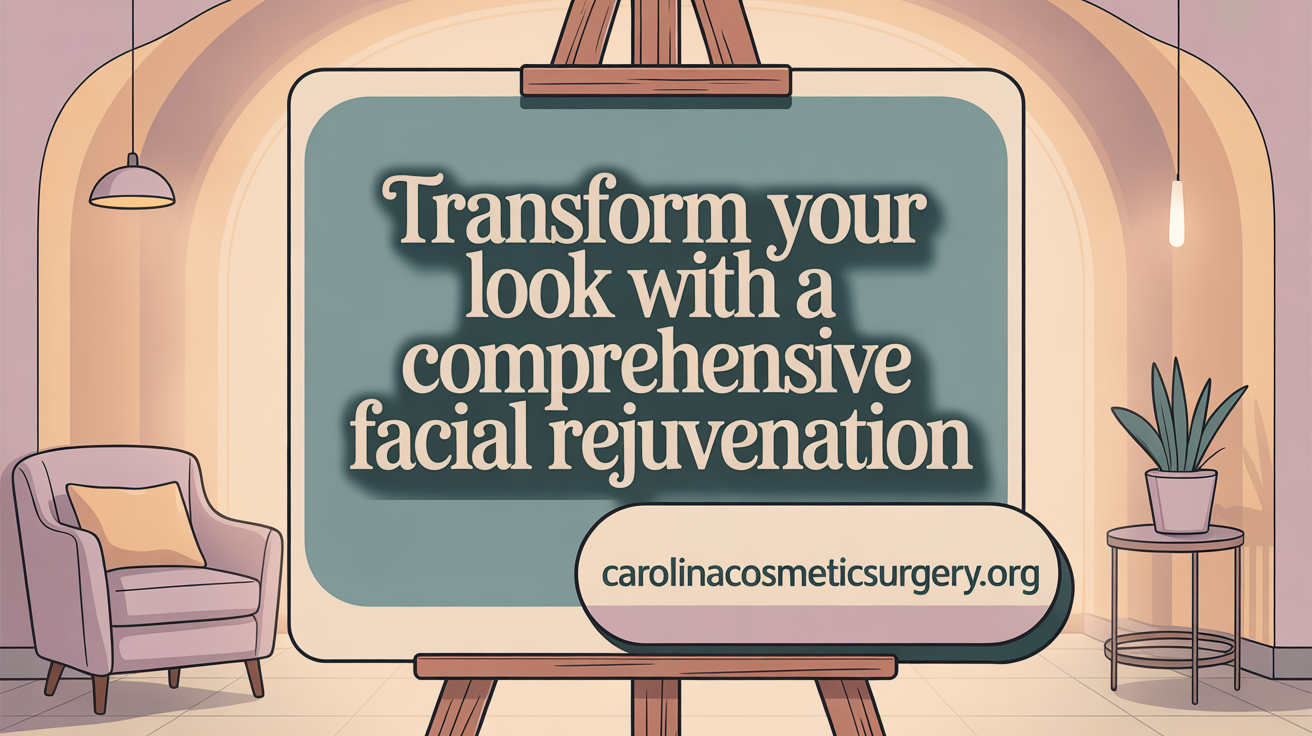
What is a facelift and what areas does it target?
A facelift is a surgical procedure aimed at rejuvenating the face by lifting and tightening sagging skin and underlying tissues. It primarily addresses signs of aging such as loose skin, wrinkles, and volume loss in the lower face and neck.
There are different types of facelifts designed to target specific areas. A full facelift, also known as a SMAS facelift, involves tightening the tissues in the mid to lower face and neck, resulting in a more youthful appearance. Mini facelifts are less extensive and focus mainly on the lower face and jawline, reducing jowls and fine lines. Specific procedures like deep plane facelifts go deeper to manipulate underlying tissue layers for longer-lasting results.
These procedures mainly target the jawline, jowls, submental area (double chin), and cheeks, significantly reducing wrinkles, sagging, and volume loss, and creating a natural, refreshed look.
Types of facelifts (full, mini, SMAS, deep plane)
| Type of Facelift | Focus Area | Technique Highlights | Typical Result Longevity |
|---|---|---|---|
| Full Facelift | Lower face, neck, cheeks | Tightens underlying muscles, skin removal, SMAS manipulation | 7-10 years |
| Mini Facelift | Lower face, jawline | Smaller incisions, less tissue stretching | About 5 years |
| SMAS Facelift | Deep muscular layer lift | Reshapes and tightens fascia for longer-lasting effects | 10+ years |
| Deep Plane Lift | Deep tissue repositioning | Submuscular detachment for natural, enduring results | 10+ years |
Procedure details and anesthesia
Facelift surgeries are generally performed under general anesthesia, ensuring patient comfort throughout the procedure.
The surgeon makes incisions typically around the ears, sometimes extending into the hairline, and in some cases under the chin. Through these incisions, the surgeon lifts the skin, tightens underlying muscles, and re-drapes the skin. The procedure duration varies from about 2 to 4 hours depending on the type of facelift.
Recovery timelines and care
Recovery from a facelift generally takes about 10 to 14 days. In the immediate postoperative period, patients may experience swelling, bruising, and mild discomfort.
Patients are usually advised to rest, keep their head elevated, and avoid strenuous activities for at least two weeks. Follow-up care includes wound management, avoiding sun exposure, and wearing compression garments if recommended by the surgeon.
Most patients return to work after approximately 2 weeks, although full healing and optimal results may take several months.
Longevity and expected outcomes
A well-performed facelift can produce results that last around 7 to 10 years, significantly reducing visible aging signs.
Results include a more defined jawline, smoother neck, and fewer wrinkles, leading to a natural, youthful appearance. The procedure effectively addresses lax skin, deep creases, and tissue sagging, restoring facial contours with natural-looking outcomes.
Risks and benefits
While a facelift offers substantial aesthetic improvement, it carries risks such as scarring, infection, nerve damage, and potential asymmetry. Choosing an experienced, skilled surgeon minimizes these risks.
The benefits include a rejuvenated appearance, increased confidence, and long-lasting results. As aging continues, some natural changes may occur, and minor touch-up procedures might be considered in the future.
Overall, a facelift remains one of the most effective surgical options for comprehensive facial rejuvenation, providing dramatic, natural-looking results with proper care and realistic expectations.
Brow Lifts: Elevating the Upper Face and Smoothing Forehead Wrinkles
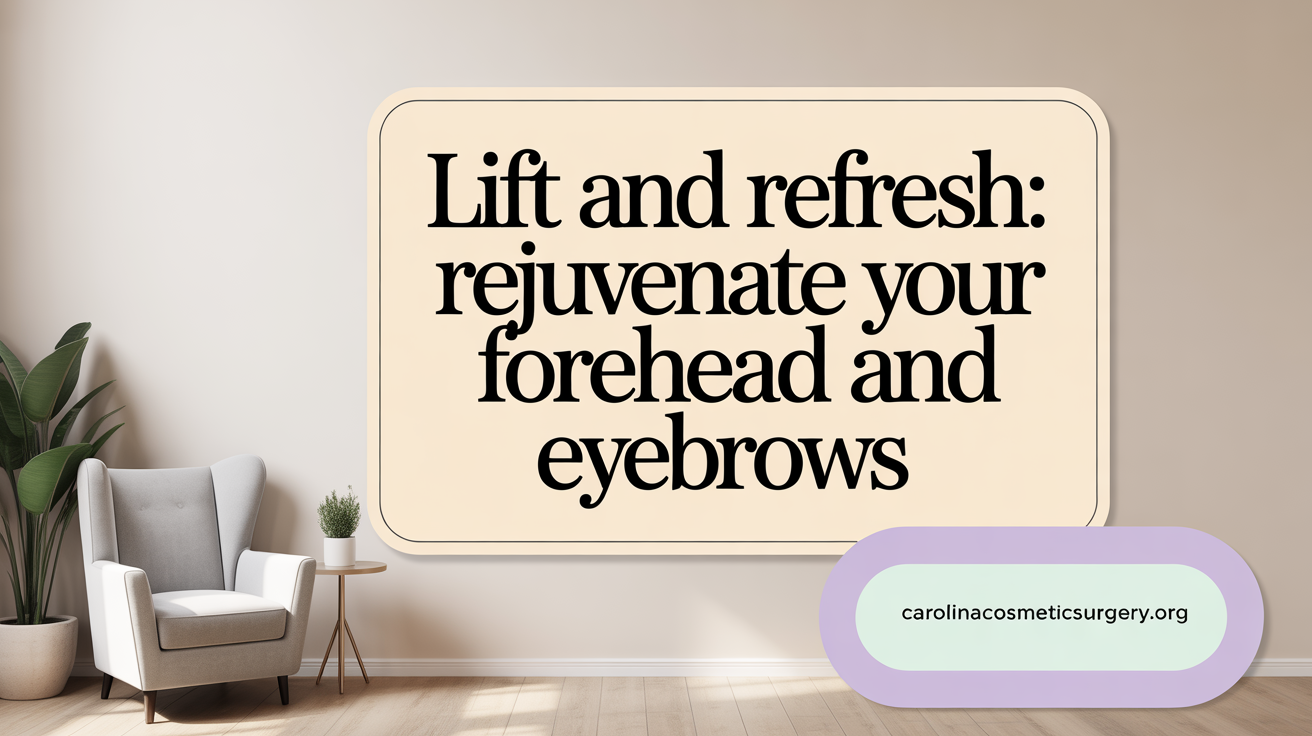
What is the purpose of brow lifts?
A brow lift aims to lift sagging eyebrows, smooth vertical and horizontal forehead wrinkles, and restore a more youthful, alert appearance. It can also improve vision by reducing excess skin that hangs over the eyes, enhancing both aesthetics and functionality.
What are the different brow lift techniques?
Several techniques are used in brow lift surgery, each suited to different types of aging signs and patient needs:
- Endoscopic brow lift: Uses small incisions hidden within the scalp, guided by a camera for precise tissue repositioning.
- Coronal brow lift: Involves a long incision across the scalp, suitable for more advanced aging and deep wrinkles.
- Temporal brow lift: Focuses on incisions hidden in the hair at the temples to lift the outer brow.
- Direct brow lift: Incisions are made just above the brow for more targeted lifting, often used for significant corrections.
Procedure details and incisions
The procedure's incisions varies:
- Endoscopic lift: Several small incisions within the hairline, minimizing visible scarring.
- Coronal lift: A long incision from ear to ear across the scalp.
- Temporal lift: Incisions concealed within the hair at each temple.
- Direct lift: Incisions placed directly above the eyebrows.
The surgeon lifts skin and underlying tissues, then secures the eyebrows in a higher, more youthful position. The choice of technique depends on the amount of sagging, forehead wrinkles, and patient's hairline considerations.
Who are suitable candidates?
Candidates are typically individuals aged 40-60 with signs of aging such as deep forehead wrinkles, furrowed brows, and low-set eyebrows. Those with good skin elasticity and realistic expectations benefit most. Patients with heavy, drooping brows or significant forehead lines may consider a traditional or coronal approach.
What are the expected aesthetic and functional outcomes?
- A more youthful, refreshed look with lifted eyebrows
- Smoother forehead wrinkles
- Improved visual field if drooping brows previously obstructed vision
- Natural results that do not appear
Eyelid Surgery (Blepharoplasty): Refining the Periorbital Area
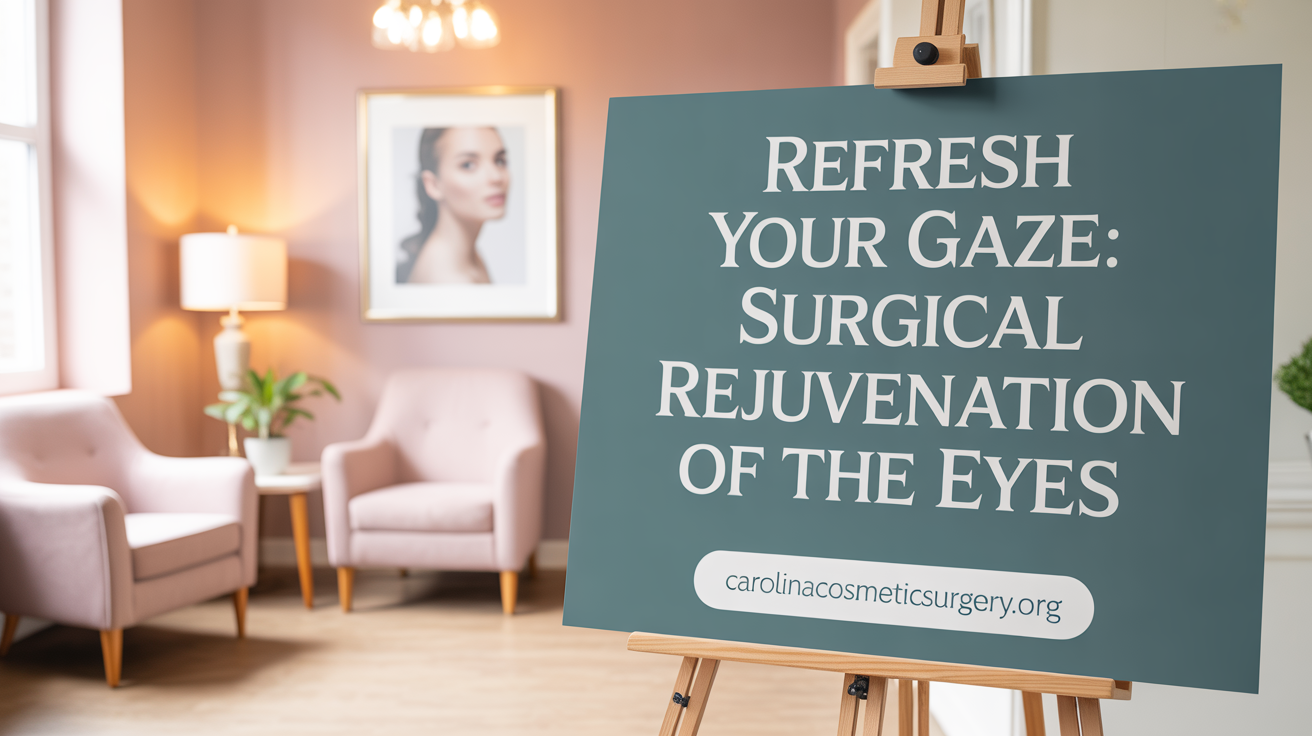
What is blepharoplasty and what are its goals?
Blepharoplasty, commonly known as eyelid surgery, is aimed at improving the appearance of the eyelids by removing excess skin, fat, and sometimes muscle. Its primary goals are to create a more alert, rested look, reduce sagging, and address puffiness or bags under the eyes. The procedure enhances both aesthetic appeal and, in some cases, vision.
What are the differences between upper and lower eyelid surgery?
Upper eyelid surgery targets drooping eyelids that may obstruct vision or cause a tired appearance. It involves removing excess skin and fat through incisions along the natural eyelid crease, which helps hide scars. Lower eyelid surgery focuses on puffy bags, wrinkles, and sagging under the eyes. Incisions are typically made just below the lash line or inside the eyelid. Both procedures can be performed separately or together for comprehensive rejuvenation.
What incision methods are used?
Incision techniques vary depending on the eyelid area and patient needs. Upper eyelid incisions follow the natural crease, making scars less visible. For the lower eyelid, the incision is placed just below the eyelashes or inside the eyelid (transconjunctival approach) to avoid external scars.
Functional and aesthetic indications
Aside from aesthetic improvements, blepharoplasty can correct functional issues such as vision impairment caused by drooping eyelids. It also addresses signs of aging like bags, wrinkles, and skin laxity, leading to a more youthful and open-eyed appearance.
Postoperative recovery and risks
Post-surgical recovery typically lasts about one to two weeks. Swelling and bruising are common but decrease gradually. Patients are advised to rest, avoid strenuous activities, and protect the eyes from sun exposure during healing. Risks include infection, scarring, dry eyes, and, rarely, visual impairment. Proper postoperative care and choosing experienced surgeons help minimize these risks.
What are the long-term results and benefits?
The outcomes of blepharoplasty are generally lasting, with results that tend to persist for several years. In particular, lower eyelid results are often durable and resistant to the effects of aging. Many patients experience a rejuvenated, more alert appearance that boosts confidence.
Can eyelid surgery be performed without a brow lift?
Yes, eyelid surgery, or blepharoplasty, can be performed independently to improve the eyelids’ appearance and function. However, if low-hanging brows or forehead wrinkles are present, a brow lift may be necessary for a more complete facial rejuvenation.
Is insurance coverage possible?
Insurance may cover eyelid surgery if it’s necessary to restore vision obstructed by drooping eyelids. This involves documented clinical evaluation and tests. Purely cosmetic procedures are usually not covered.
This comprehensive approach ensures that patients understand the procedures, recover safely, and achieve natural, long-lasting results.
Comparing Brow Lifts and Blepharoplasty: Complementary or Alternative?
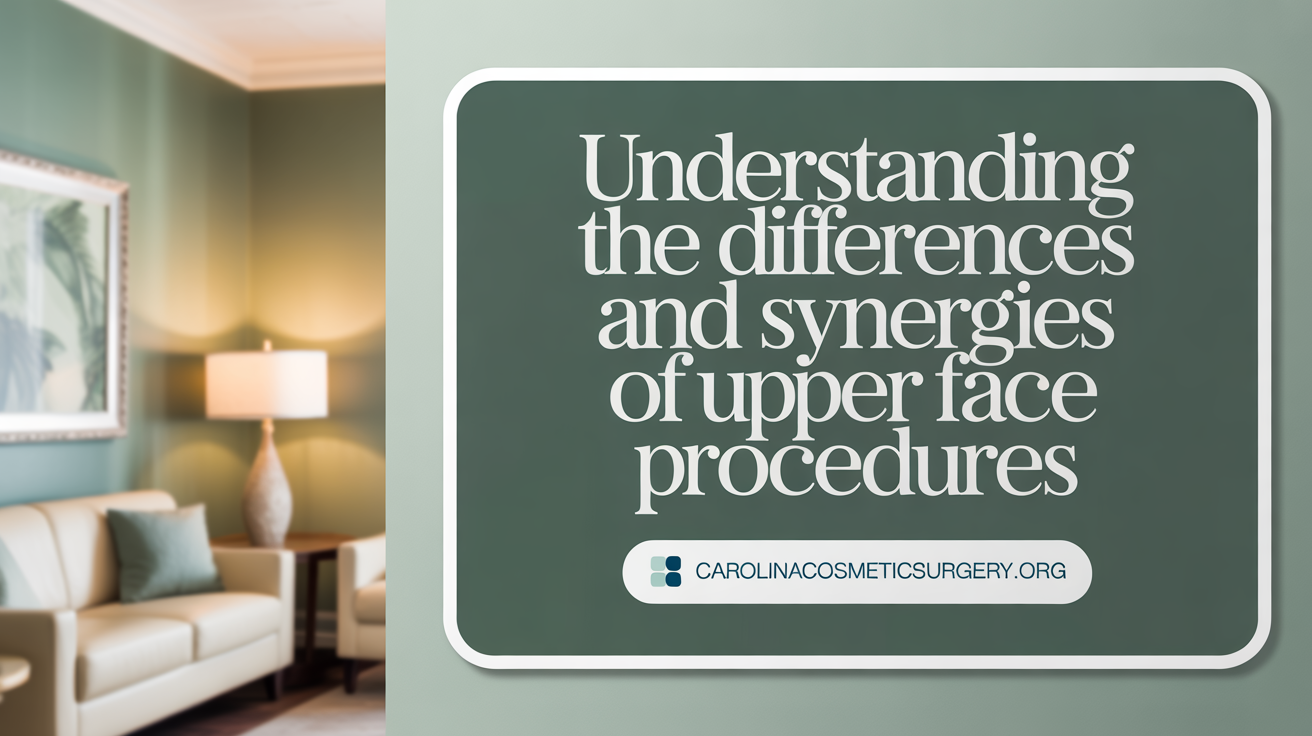
What are the targets and benefits of brow lifts versus blepharoplasty?
Brow lifts primarily focus on elevating the eyebrows and smoothing horizontal forehead wrinkles, resulting in a more alert and youthful appearance. They also help correct brow ptosis—a drooping brow—and can improve vision if sagging eyelids obstruct sight. Blepharoplasty, on the other hand, targets the eyelids specifically. It removes excess skin, fat, and muscle from the upper eyelids to reduce drooping and hooding, and from the lower eyelids to diminish puffiness, under-eye bags, and wrinkles. The main benefit is a more rested, open-eyed look that enhances both appearance and, in some cases, vision.
How do surgical approaches and incisions differ?
Brow lift procedures include various techniques such as traditional open (coronal or direct) methods, endoscopic lifts with smaller scalp incisions, lateral or temporal lifts, and lateral brow lifts. Incisions may be hidden within the scalp hairline or behind the ears, minimizing visible scars. Conversely, blepharoplasty involves making incisions along natural eyelid creases for upper eyelids or just below the eyelashes or inside the eyelid for lower eyelids. These incisions are carefully placed to hide scars within natural folds, creating minimal visible marks.
When should one consider choosing a brow lift, blepharoplasty, or both?
The decision depends on individual facial anatomy and specific aging signs. If drooping eyelids are caused mainly by excess skin and fat, blepharoplasty is typically sufficient. If sagging eyebrows or forehead wrinkles are prominent, a brow lift is suitable. For individuals with both brow ptosis and eyelid drooping, combining procedures often yields the best overall rejuvenation. A professional consultation can determine whether a stand-alone or combined approach is appropriate.
How does each procedure influence appearance and function?
A brow lift generally results in a higher, more defined eyebrow contour, lessening horizontal forehead lines and frown lines. It can also improve peripheral vision by opening the eyelid area. It tends to produce a youthful, relaxed forehead. Blepharoplasty enhances the eye area by removing excess skin and puffiness, giving a brighter, more alert appearance. In some cases, it also improves vision if eyelid drooping obstructs sight. Both procedures can restore facial harmony but serve different purposes—brow lifts for the upper face and forehead, blepharoplasty for the eyelids.
What outcomes and longevity can patients expect?
Brow lift results last approximately 10 to 12 years, providing long-term correction of wrinkles and sagging brows. Results may diminish gradually as aging continues. Blepharoplasty outcomes tend to be enduring, often lasting many years or a lifetime, unaffected significantly by natural aging due to the removal of excess tissue. However, natural aging may still cause some changes over time.
| Aspect | Brow Lift | Blepharoplasty | Additional Notes |
|---|---|---|---|
| Target Area | Forehead, eyebrows | Eyelids (upper and/or lower) | Both address upper face aging but in different zones |
| Incision Type | Hairline or scalp incisions | Eyelid creases or interior eyelid | Incision locations are hidden in natural folds |
| Primary Benefits | Elevates eyebrows, smooths forehead wrinkles | Reduces eyelid drooping, puffiness, bags | Both enhance appearance; often combined for full rejuvenation |
| Longevity | 10–12 years | Many years, often lifelong | Results are lasting, especially with careful healing |
| Recovery Time | 1–2 weeks | 1–2 weeks | Recovery varies based on method and individual |
Understanding these differences helps in choosing the right procedure tailored to personal aging signs and aesthetic goals. Open communication with a qualified specialist ensures optimal results, whether opting for one or both treatments.
Non-Surgical Alternatives for Brow and Eyelid Rejuvenation
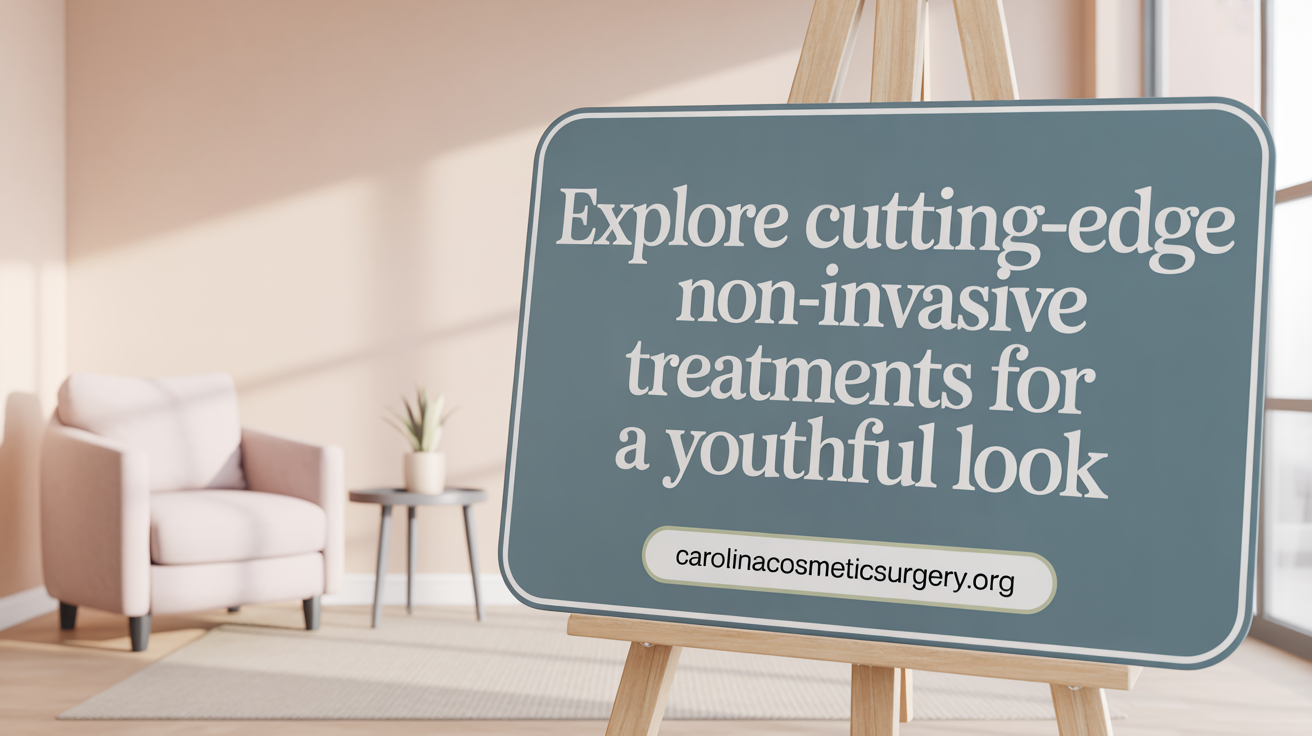
What are the types of non-surgical lifts available?
Non-surgical facial rejuvenation options include ultrasound, laser, and radiofrequency technologies designed to tighten and lift the skin without incisions. These methods stimulate collagen production and improve skin firmness.
Example: Fotona4D laser lift and Ultherapy
Fotona4D uses dual-wavelength laser technology to target deep and superficial skin layers, promoting collagen growth and overall skin tightening. Ultherapy employs focused ultrasound energy to lift the brow line and improve skin elasticity.
How effective are these non-invasive treatments?
While they offer noticeable improvements, non-surgical lifts tend to have more subtle, natural-looking results compared to surgical procedures. The results generally last between 6 to 12 months, requiring maintenance treatments for sustained effects.
Benefits and limitations
The main advantages include minimal downtime, reduced risk, and no scars, making them appealing for those with early signs of aging. However, these treatments are less effective for severe sagging or deep wrinkles, where surgical options yield more dramatic outcomes.
Who are ideal candidates?
Ideal candidates for non-surgical lifts are individuals with mild to moderate skin laxity, early forehead wrinkles, or slight brow heaviness. They are typically younger or those seeking preventative care rather than significant correction.
Comparing non-surgical methods to surgical results and longevity
Surgical brow lifts can last approximately 10 to 12 years and provide substantial correction, especially for pronounced sagging. Non-surgical options, in contrast, offer temporary enhancement with effects that diminish over time, necessitating repeat treatments. The choice depends on individual needs, aging severity, and desired longevity.
Candidate Criteria and Personalized Treatment Planning

Can eyelid surgery be performed without a brow lift?
Yes, eyelid surgery, or blepharoplasty, can be performed independently of a brow lift. The decision primarily depends on the individual’s facial anatomy and aging characteristics. Some patients may only need a procedure targeting sagging eyelids or under-eye bags, making blepharoplasty sufficient to achieve a more alert and youthful appearance.
However, others with persistent brow sagging or forehead wrinkles might benefit from a combined approach. A comprehensive assessment by a qualified surgeon helps determine whether blepharoplasty alone will meet the aesthetic and functional goals, or if adding a brow lift can produce more balanced and natural-looking results.
Criteria for surgical candidacy for facelifts, brow lifts, and blepharoplasty
Candidates should generally be in good health, with realistic expectations about outcomes. For facelifts, candidates often experience significant sagging in the lower face and neck, while brow lift candidates typically have heavy or drooping eyebrows along with forehead lines.
Eyelid surgery candidates usually face issues like sagging eyelids that impair vision or cause cosmetic concerns such as puffiness or drooping. Age is a factor, but overall health and skin elasticity are more critical in determining suitability.
Evaluating facial anatomy and aging factors
A thorough facial analysis considers areas like skin quality, underlying tissue elasticity, fat distribution, and bone structure. Age-related changes—such as muscle weakening, fat pad descent, and skin laxity—help guide the choice of procedures.
This evaluation ensures that treatments are customized to each individual, addressing specific concerns like deep forehead wrinkles, low eyebrows, or eyelid heaviness.
Importance of consultation with qualified surgeons
A consultation with a board-certified plastic surgeon or facial specialist is essential. They can assess your facial features, discuss your goals, and recommend appropriate interventions. Such experts consider the risks, benefits, and realistic outcomes of each procedure.
Expert guidance helps in planning a staged or combined surgical approach that enhances overall facial harmony while minimizing recovery time.
Setting realistic expectations
Understanding what surgery can and cannot achieve is crucial. While procedures like brow lifts and blepharoplasty can significantly rejuvenate appearance, they do not halt aging. Patients should have clear discussions about likely outcomes, scar placement, recovery periods, and longevity of results.
Managing expectations leads to higher satisfaction and a more positive surgical experience.
Combining procedures for comprehensive results
Many patients benefit from combining techniques such as a brow lift and blepharoplasty. This comprehensive approach addresses multiple signs of aging in the upper face, creating a natural, refreshed look.
Combining procedures might reduce overall downtime and improve overall facial harmony, especially for those with multiple aging concerns.
Reliable sources for selection criteria
When researching your options, search for "Selection criteria for facial rejuvenation surgeries" to find detailed guidelines used by qualified professionals. Consulting reputable clinics and experienced surgeons ensures personalized and safe treatment planning.
Recovery Expectations and Postoperative Care Across Procedures

What are the recovery considerations for combined brow lift and blepharoplasty surgeries?
Combining a brow lift with eyelid surgery can provide a comprehensive facial rejuvenation, addressing multiple signs of aging in the upper face. Recovery typically involves managing some swelling and bruising, which generally last about one to two weeks. During this time, patients are advised to rest and follow specific postoperative instructions.
Initial days post-surgery require careful head elevation to reduce swelling. Cold compresses help alleviate bruising and discomfort. Patients should avoid strenuous activities, heavy lifting, and direct sun exposure to facilitate healing. It’s crucial to adhere to surgeon guidance regarding medication use, wound care, and activity restrictions.
Most patients experience a gradual return to normal routines within two weeks. Swelling and bruising diminish steadily, and sensory changes or skin tightness usually improve over the first month. Proper postoperative care and patient compliance are essential for a smooth recovery and optimal surgical outcomes.
Typical recovery timelines for facelifts, brow lifts, eyelid surgery
Recovery periods vary depending on the procedure. A full facelift often requires about two weeks of downtime, with swelling and bruising peaking within the first few days and gradually subsiding. A brow lift, particularly minimally invasive endoscopic ones, typically takes one to two weeks for initial recovery, with less visible swelling. Eyelid surgery generally requires about one week to ten days for recovery, with less discomfort and swelling compared to more extensive procedures.
Managing swelling, bruising, and discomfort
Swelling and bruising are common after facial rejuvenation surgeries. Cold compresses help reduce these symptoms during the first 48 hours. Keeping the head elevated, even while sleeping, minimizes fluid buildup. Over-the-counter or prescribed medications aid in pain control, and avoidance of smoking and alcohol accelerates healing.
Discomfort should gradually decrease. Persistent or severe pain warrants contact with the surgeon for evaluation. Light activity can usually be resumed in a few days, while strenuous exercise and heavy lifting should be avoided for at least two weeks.
Postoperative instructions and precautions
Surgeons typically recommend specific care routines, including wound cleaning, scar care, sun protection, and activity restrictions. Patients are advised to avoid bending over or exertion initially to prevent increased swelling or bleeding.
Regular follow-up visits allow the surgeon to monitor healing progress and address any concerns. Adherence to these instructions significantly impacts the quality of results and minimizes risks.
Importance of surgeon guidance and patient compliance
Following surgeon instructions is vital for a safe recovery. Patients should attend all scheduled follow-ups and communicate any unusual symptoms such as excessive swelling, bleeding, or signs of infection.
Compliance with activity restrictions, medication schedules, and wound care promotes healing and reduces the risk of complications.
Differences in recovery between surgical and non-surgical options
Non-surgical treatments like laser skin tightening or Fotona4D typically involve minimal downtime, with patients often resuming normal activities immediately or within a day. Swelling and redness are usually temporary.
In contrast, surgical procedures involve larger incisions and tissue manipulation, leading to longer recovery times, swelling, bruising, and a more extensive healing process.
Understanding these differences helps patients set realistic expectations and choose appropriate treatments based on their goals and lifestyle.
Balancing Risks, Outcomes, and Expectations for Facial Rejuvenation
 When considering facial rejuvenation procedures like facelifts, brow lifts, or blepharoplasty, understanding potential complications is essential. Common risks include nerve damage, scarring, infection, and in some cases, visual impairment with eyelid surgery. To minimize these risks, choosing experienced, board-certified surgeons is crucial. Such professionals adhere to strict safety standards, provide thorough preoperative assessments, and deliver personalized care.
When considering facial rejuvenation procedures like facelifts, brow lifts, or blepharoplasty, understanding potential complications is essential. Common risks include nerve damage, scarring, infection, and in some cases, visual impairment with eyelid surgery. To minimize these risks, choosing experienced, board-certified surgeons is crucial. Such professionals adhere to strict safety standards, provide thorough preoperative assessments, and deliver personalized care.
The durability of results varies across procedures. For example, brow lifts typically last about 10 to 12 years, while blepharoplasty results tend to be long-lasting, often unaffected by natural aging. Achieving natural-looking outcomes depends on the skill of the surgeon and realistic patient expectations.
It is important to weigh surgical options against non-invasive treatments. Procedures like Fotona4D laser therapy offer skin tightening with minimal downtime but may be suitable only for early signs of aging. Surgical options, although more invasive with longer recovery, generally deliver more dramatic and enduring results.
Candidates should consult with qualified professionals to determine the most appropriate approach tailored to their unique facial features and concerns. Open discussions about potential risks, expected results, and long-term maintenance help foster realistic expectations and satisfaction.
Regarding insurance coverage, eyelid surgery for hooded eyelids is often covered if it impairs vision, which is medically necessary. Otherwise, if performed solely for aesthetic reasons, it is typically considered a cosmetic procedure with associated risks and costs that the patient bears.
Making Informed Choices for Facial Rejuvenation
Facial rejuvenation through facelifts, brow lifts, and eyelid surgery offers a spectrum of solutions tailored to distinct aging concerns. Understanding the procedural differences, recovery demands, and suitability criteria empowers patients to select the best treatment pathway. Consulting experienced, board-certified surgeons is crucial to achieve natural, harmonious results while minimizing risks. Whether opting for surgical or non-surgical approaches, careful evaluation and realistic expectations are key to unlocking lasting facial vitality and confidence.
References
- Eye Rejuvenation: Brow Lift vs Blepharoplasty
- Blepharoplasty Vs. Brow Lift Surgery
- Brow Lift vs. Eye Lift: A Comparison - Buffalo, NY
- Brow lift vs forehead lift: What's the difference and which is right for ...
- Brow Lift vs. Eyelid Surgery: Which Procedure is Right for You?
- Brow Lift vs Blepharoplasty – Choose the Right Option
- Facelift, Brow Lift, or Mini Facelift? - Granite Bay Cosmetic Surgery
- Facial Rejuvenation vs Facelift – What's the Real Difference?
- Choosing Between Brow Lift & Blepharoplasty - Ran Rubinstein
- Brow Lift vs Blepharoplasty: What's The Difference? | Sydney
